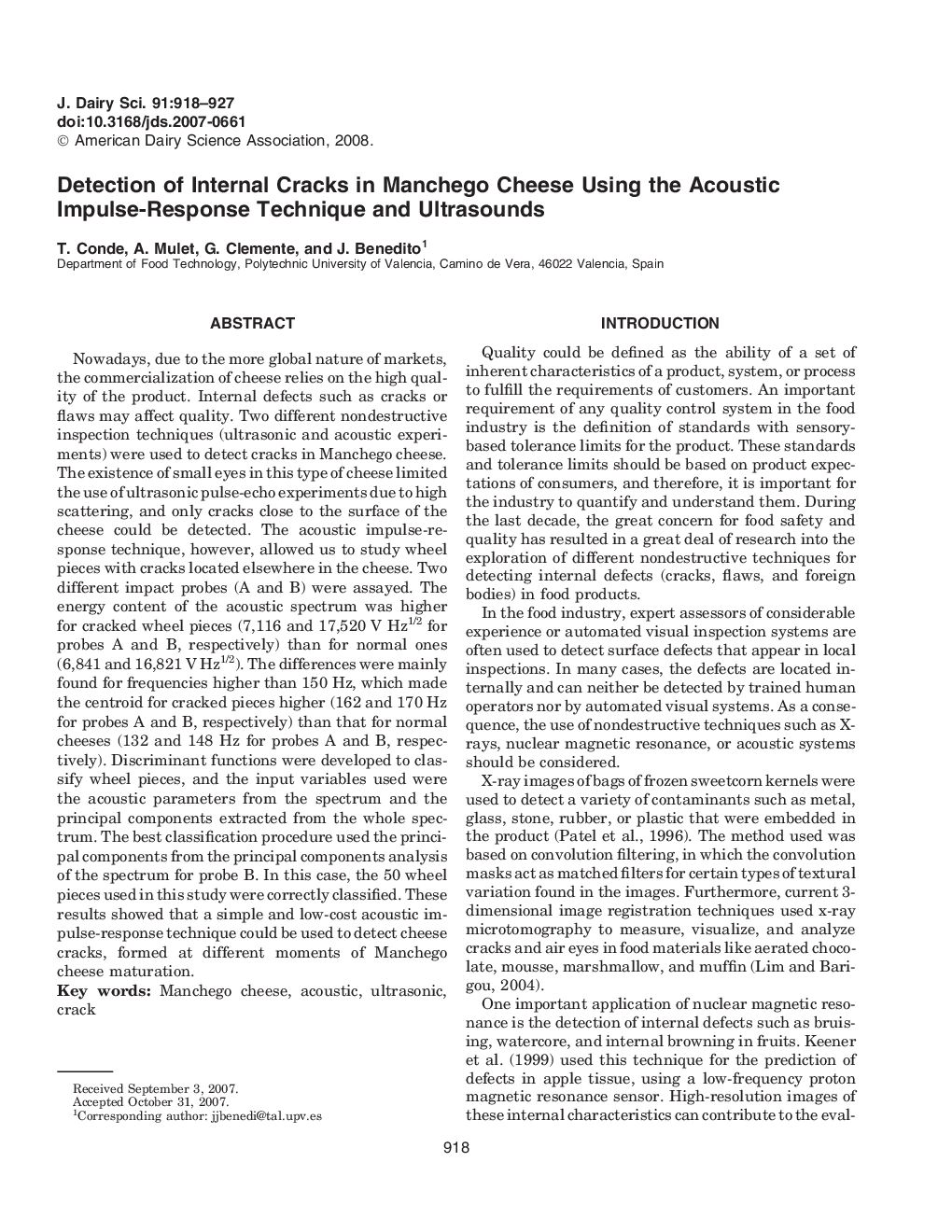| Article ID | Journal | Published Year | Pages | File Type |
|---|---|---|---|---|
| 2440489 | Journal of Dairy Science | 2008 | 10 Pages |
Nowadays, due to the more global nature of markets, the commercialization of cheese relies on the high quality of the product. Internal defects such as cracks or flaws may affect quality. Two different nondestructive inspection techniques (ultrasonic and acoustic experiments) were used to detect cracks in Manchego cheese. The existence of small eyes in this type of cheese limited the use of ultrasonic pulse-echo experiments due to high scattering, and only cracks close to the surface of the cheese could be detected. The acoustic impulse-response technique, however, allowed us to study wheel pieces with cracks located elsewhere in the cheese. Two different impact probes (A and B) were assayed. The energy content of the acoustic spectrum was higher for cracked wheel pieces (7,116 and 17,520 V Hz1/2 for probes A and B, respectively) than for normal ones (6,841 and 16,821 V Hz1/2). The differences were mainly found for frequencies higher than 150 Hz, which made the centroid for cracked pieces higher (162 and 170 Hz for probes A and B, respectively) than that for normal cheeses (132 and 148 Hz for probes A and B, respectively). Discriminant functions were developed to classify wheel pieces, and the input variables used were the acoustic parameters from the spectrum and the principal components extracted from the whole spectrum. The best classification procedure used the principal components from the principal components analysis of the spectrum for probe B. In this case, the 50 wheel pieces used in this study were correctly classified. These results showed that a simple and low-cost acoustic impulse-response technique could be used to detect cheese cracks, formed at different moments of Manchego cheese maturation.
